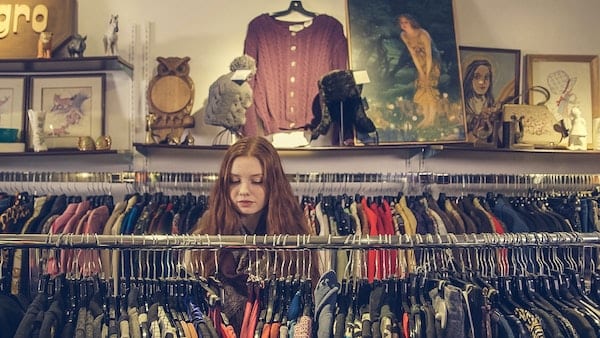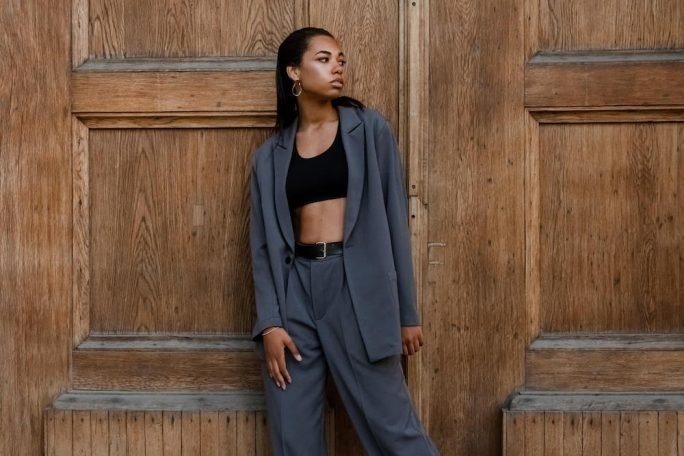For fashion lovers (and the rest of us regular-clothes-wearing-people) it is not news to hear that global textile waste is a serious problem for our fragile planet.
Australia ranks second in the world for clothing and textile disposal. As in second worst, meaning that as a nation we purchase 27 kilograms of clothing per person each year, and we discard 23 kilograms of it, according to the Australian Bureau of Statistics. That’s the equivalent of an over-stuffed suitcase full of clothes that is pushing the checked luggage limits to the max, and many of us know exactly what that looks like (or at least have fond pre-pandemic memories of it).
Do we really throw away that many clothes? And that’s without Marie Kondo popping over for a purge.
It can be very tempting to switch off to such broad and demoralising statistics, or feel they simply don’t apply to you; but the fact is collectively we can make a measurable difference by choosing what to buy, how to spend our money, and which products we consume.
Look for fashion brands who adopt sustainable practices
The good news is useful information is becoming more accessible and this has influenced the transparency of some clothing producers. We can easily find the large brands that are making moves to address textile waste with sustainable collections, such as H&M Conscious, Patagonia, Stella McCartney, Everlane and more. These companies promote their sustainable initiatives as part of their marketing campaigns.
There has also been a move towards sustainable materials by many Australian labels such as Noble Label (who use primarily deadstock fabrics destined for landfill), The Common Good Co (who use 100% recycled material) and swimwear brands such as Peony, Monte & Lou, and Baiia.
There are also various apps which you can use to look up a brand and determine how ethically responsible it is, such as ‘Good On You’, which uses a star rating for ethical responsibility. Another app is ‘Fair Fashion’, which has a scoreboard to assess the working conditions and living standards of its employees.
Consumers are expecting more transparency and accountability in the fashion industry, and this demand will lead to more clothing producers improving their practices. More choice for those wanting to be more mindful about their spending will ultimately have a positive effect on mainstream shopping habits.
“Every time you spend money, you’re casting a vote for the kind of world you want.”
-Anna Lappe (author, educator, sustainability advocate)
Picking through your thrift shopping options

As well as seeking out and supporting more sustainable clothing labels, we also know that thrift (and its upmarket subset ‘vintage’) shopping can help scratch the insatiable itch felt by many who enjoy shopping for clothes. Refreshing your wardrobe with pre-loved items rather than cheap and convenient fast fashion is an obvious solution. It’s so simple it almost seems too good to be true…
The fact is thrift shopping is not always a straight-forward solution. Shopping for a specific item within a short timeframe (Need a black dress for a dinner tomorrow night?) can be a real problem.
It takes time to trawl through op-shops with no guarantee you will find a style you like, sizing is often an issue as every item is a one-off, and the cost of altering a garment may not be worth it. The internet is full of inspiring images where people have adapted thrift store items into incredible outfits (Jillian Owens’s ReFashionita blog has been around for over a decade); but not everyone has the skills, time or desire to become an accomplished seamstress.
In addition to time constraints, sizing issues and possibly discomfort about the idea of wearing second-hand clothing, it can also take a certain confidence about your own personal style to wear thrifted fashion. An 80s vintage tan trench coat might look amazing on your Instagram feed, but in reality you might feel more like a flasher than a fashionista.
There is real and undeniable comfort in shopping from any well-known clothing brand and their expertly selected, market researched, current range for the season. We see this particularly with teens and young people, who often want to fit in with their peers more than express their own unique style. And even the most revolutionary fashion trendsetting thrifters probably nagged their parents for the same brand of jeans as “everyone else” at some point in their fashion journey.
These thrifting obstacles can be overcome. There are vintage stores that curate pre-loved clothing and have done the bulk of the sorting for you, culling items that are poorly made or damaged. Some will focus on specific items (like denim clothing at Scout for Vintage), style or era (such as 1950s-70s at Frocks and Slacks).
Shopping for second-hand clothing online is another way to reduce your searching time and target the exact sizes and styles that you are looking for. Ebay for example allows you to search by brand, size and descriptors, and certain sellers will consistently offer items of a similar look and feel. While established fashion stores have marketing promotions that find their way to you (overloaded inbox, anyone?), you may need to be more proactive with thrift options. Once you find a curated store or online option that resonates with you – keep yourself updated on their latest stock, keep a list of webstores addressed in your favourites, or just check in regularly.
Support makers who upcycle

Another alternative is to seek out upcycled fashion, where a designer has taken pre-loved materials and created a product that is new to the market.
This process of repurposing often involves less manufacturing than turning plastic bottles into sunglasses, and artisans and makers are creating a limited range, handcrafted, high-quality products. Adelaide-based label Metanoia Leather upcycles locally sourced quality leather jackets into contemporary leather handbags, and reducing waste is a natural part of the process.
Eliminating the drawbacks of thrift shopping, while retaining the sustainable benefits of upcycling AND creating a new designer item for the consumer really does seem like an ultimate win-win.
Eco-Age co-founder Livia Firth’s approach is a good one:
“Become an active citizen through your wardrobe.”
Fashionista or not, that feels like a great fit.







